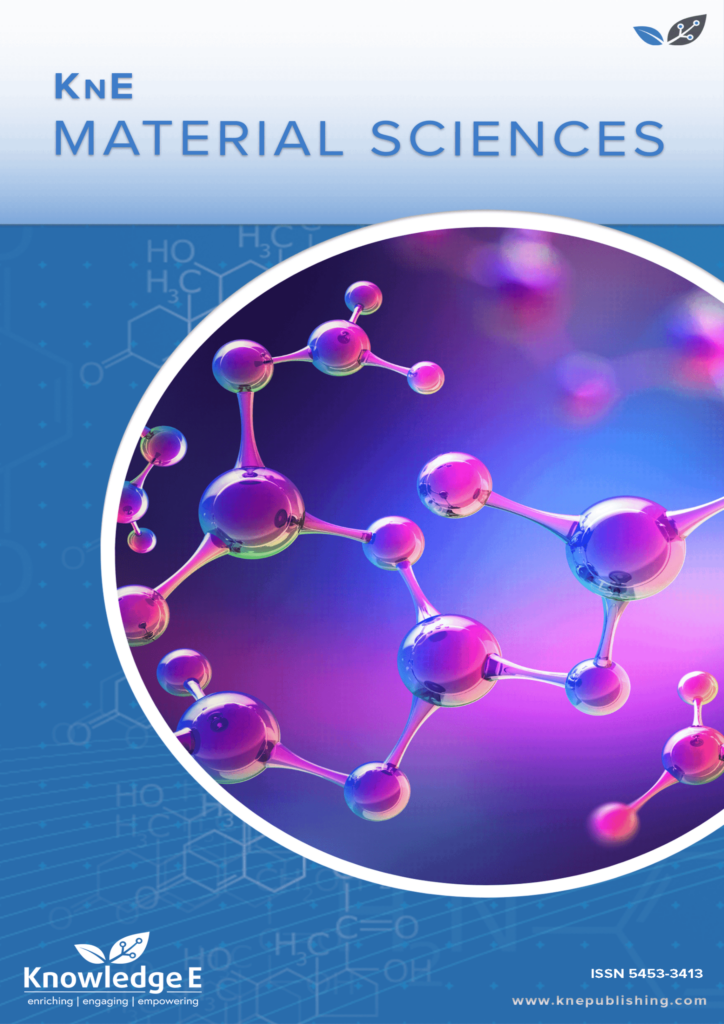
KnE Material Sciences
ISSN: 2519-1438
The latest conference proceedings on physical materials, energy materials, electrical materials.
Studies of the Chemical and Structural Heterogeneity of the Technological Model of the Fusion Boundary of Pearlitic Steel and the Material of the Anticorrosive Cladding of VVER
Published date:May 06 2018
Journal Title: KnE Material Sciences
Issue title: 15th International School-Conference "New Materials – Materials of Innovative Energy" (MIE)
Pages:187–198
Authors:
Abstract:
The properties of ingots of variable chemical composition are investigated. The ingots simulated the fusion boundary of heterogeneous steels of pearlitic and austenitic grade, used as structural for VVER-type reactors. The distribution of chemical elements and hardness, microstructure was studied. The phase composition of the ingots was studied using thermodynamic modeling. It was found that the distribution of alloying elements, hardness and phase composition is nonlinear. In ingots, a zone of a sudden change in hardness was detected, from 350 HB to 150 HB, ingot 1, and from 250 HB to 160 HB, ingot 2. A study of the phase composition and microstructure showed that at a ratio of the austenite phase to the ferritic (71-76)% to (29-24)%, a sharp change in hardness is observed.
Keywords: heterogeneous welded joints and cladding, fusion boundary, technological modeling, thermodynamic modeling.
References:
[1] Hanninen H. et al. Dissimilar metal weld joints and their performance in nuclear power plant and oil refinery conditions //VTT TIEDOTTEITA. – 2006. – Т. 2347.
[2] Mokhov V.A., Zubchenko A.S., Akbashev I.F., Semishkin V.P. The reactor vessel of the VVER-TOI project. Construction and construction materials // Scientific and technical collection ”Problems of Atomic Science and Technology”. Series ”Ensuring the safety of nuclear power plants”: OKB ”GIDROPRESS”, issue. 34. Materials and technology of manufacturing of equipment RU 2014. - 128 p.
[3] Szávai S., Bezi Z., Ohms C. Numerical simulation of dissimilar metal welding and its verification for determination of residual stresses //Frattura ed Integritá Strutturale. – 2016. – №. 36. – C. 36.
[4] Chaudhari R., Parekh R., Ingle A. Reliability of dissimilar metal joints using fusion welding: A Review //International Conference on Machine Learning, Electrical and Mechanical Engineering (ICMLEME: 2014). – 2014.
[5] Alber Sadek Dissimilar materials weldability concepts// Technology Lead – Materials Engineering EWI// December 15, 2015
[6] Shahid F., Khan A. A., Hameed M. S. Mechanical And Microstuctural Analysis Of Dissimilar Metal Welds //International Journal of Research and Reviews in Applied Sciences. – 2015. – Т. 25. – №. 1. – C. 6.
[7] Rajamaki P., Karkhin V. A., Homich P. N. Analysis of chemical inhomogeneity near fusion weld interface.“ //International conference on total welding management in industrial applications”, 3rd Join conference, Lappeenranta. – 2007. – C. 263-277.
[8] Maksimets N.A., Negoda E.N. Technology of welding of special steels // Proc. allowance. - Vladivostok: Publishing house FESTU.-2007.-149s.
[9] Saghafifar H. Microstructural stability of a nickel-based alloy overlay on a 2.25 Cr1Mo steel substrate : дис. – University of Nottingham, 2011.
[10] Lukas H. L. et al. Computational thermodynamics: the Calphad method. – Cambridge : Cambridge university press, 2007. – Т. 131.
[11] Saunders N. et al. The application of CALPHAD calculations to Ni-based superalloys //ROLLS ROYCE PLC-REPORT-PNR. – 2000. – C. all-all.
[12] Olson D. L. Prediction of austenitic weld metal microstructure and properties //Welding journal. – 1985. – Т. 64. – №. 10. – C. 281s-295s.
[13] Aleshin N. P. et al. Microstructure and composition of welds of Fe 3 Al intermetallic with austenitic corrosion-resistant steels //Metal Science and Heat Treatment. – 2011. – Т. 52. – №. 9. – C. 437-441.